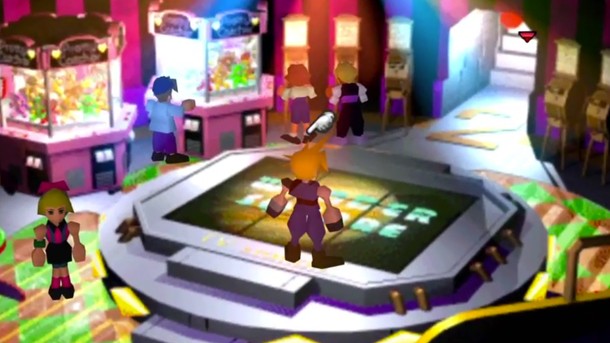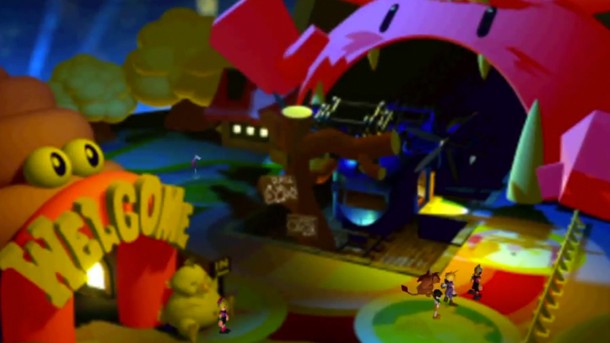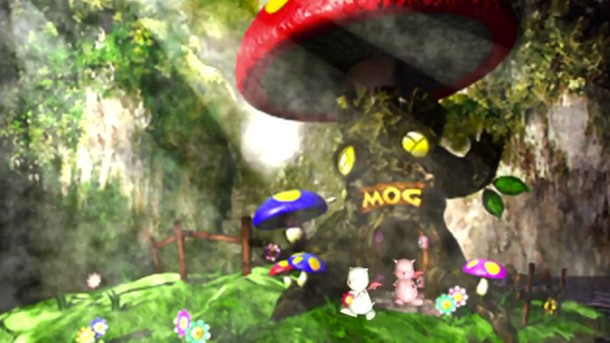Our extra-large special edition is here. Subscribe today and receive the 25% longer issue at no extra cost!
Behind The Scenes Of Final Fantasy VII’s Gold Saucer

Final Fantasy VII has many memorable and iconic moments, ranging from the silly to the serious. Though the Gold Saucer may not be as epic as the final confrontation between Cloud and Sephiroth, its mixture of goofy distractions and minigames holds a special place in fans’ hearts.
We talked among ourselves about the appeal of the Gold Saucer in the second episode of our Final Fantasy VII Game Club. However, during our visit to Square Enix for Final Fantasy XV, we were able to talk about it with the developers themselves, providing some additional insight and context to this strange and entertaining area.
Hiroki Chiba (now the director of World of Final Fantasy) was officially an event planner on Final Fantasy VII, but those duties included overseeing the entire Gold Saucer. “I actually ran free with Gold Saucer,” Chiba says. “They let me create it in the way I wanted to. Of course, I didn’t create everything myself. It’s not just my idea.”

In a game with heart-wrenching deaths and the threat of planetary annihilation, the Gold Saucer might seem like a light-hearted anomaly. That’s not an accident.
“In terms of how the idea developed, we were thinking of it from the adventure standpoint – what you see when you enter this desert area,” Chiba says. “And then, for some reason, we came up with amusement parks. Obviously, there are fun and weird events that happen in that area, but then moving forward, you start to go into the deeper and heavier story elements. So, we created it to give players a bit of a break. And if it was to be a break, we wanted players to enjoy it to the fullest, so we implemented different kinds of features that would fulfill that goal.”
Those different features come in all forms in the Gold Saucer: chocobo races, snowboarding, a battle arena, and more. “We tried to implement everything – all the ideas that popped up,” Chiba says. “Some people developed a minigame and brought it forth, and then we implemented it, and packaged it within the Gold Saucer. I don’t recall any of them being removed or rejected. I myself really wanted to do the chocobo game, so that’s what I pushed for.”

One of those minigames, Mog House, came from Square Enix’s Takashi Tokita (who has been working on the series since the original installment). He didn’t have an official role on Final Fantasy VII, but got roped into the project by chance. “I was actually working on Parasite Eve in Honolulu at the time, but I was coming back to Japan to renew my visa,” Tokita says. “I was just supposed to stay here for a week, but I got caught by the FF VII team and ended up helping for three months.”
Mog House was one of the many miscellaneous things Tokita worked on during his time on the project. In it, players feed a moogle in order to help him fly, which eventually leads to his having a family and a happy life. Think of it as a very simple Final Fantasy Tamagotchi pet – and it only came about because an artist made the background with no idea how it would be implemented in the final product. “At the time, the graphic designer had already created the visuals in advance, but they didn’t really think about what we would do with it,” Tokita says. “So, I thought it might be interesting to create this growth/nurture kind of game, where you feed the moogle and it would breed baby moogles.”

The development atmosphere that gave rise to the Gold Saucer was unique, because the area wasn’t carefully plotted in advance. Though Chiba is responsible for a majority of the area, various members of the team across multiple disciplines contributed ideas, making it easy to experiment. “At that time, it wasn’t like we had a rigid, set plan that we just followed,” Tokita says. “Mog House was a great accident, in essence, and one that wouldn’t have come about without that collaboration.”
That freedom and cooperation resulted in the Gold Saucer being one of the most memorable aspects of Final Fantasy VII. Sure, not all of the minigames and activities are fantastic, but the mere fact that they exist is part of what makes Final Fantasy VII so special; the team was able to play around, take chances, and be spontaneous. “Today, we have a more clear and proper pipeline in place,” Tokita says. “In terms of percentage chance of something like that happening, it’s lower than before. That said, it’s likely to happen in the initial concept stages, or at the end when we’re doing everything we can to make a product better. There are still people who think that way and want to do that; there are always interesting things that come about from not setting things in stone. That’s the fun of game development.”

Get the Game Informer Print Edition!
Explore your favorite games in premium print format, delivered to your door.
- 10 issues per year
- Only $4.80 per issue
- Full digital magazine archive access
- Since 1991








